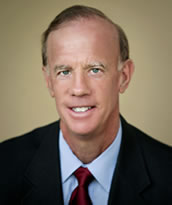In the past 12 years, I have been requested to review 242 medical legal cases to evaluate them for dental negligence. Of the cases reviewed, the majority of them had unfortunate results to which the patients attributed to malpractice. The purpose of this article is not to assess the merit of these litigations, but to educate the dental practitioner as to the types of treatment which may result in a greater incidence of legal claims, so that they will be better prepared to avoid them.
Of the cases I reviewed, the most common alleged negligence was due to dental extractions.
Table 1: Complications due to extractions
Infections requiring hospitalization - 23
(8 fatalities)
Severed lingual nerve - 8
Severed inferior alveolar nerve - 2
Sinus perforation - 7
Fractured mandible - 14
TMJ injuries - 4
Extraction of wrong teeth - 5
Total cases: 63
In the infection requiring hospitalization subset, all patients were hospitalized, and of these 8 patients died from the infections. In the severed nerve subset, the injuries were permanent and the dentists involved did not refer or follow up the nerve injuries. In the sinus perforation subset, the dentists did not diagnose treat nor refer the patient for treatment of the perforations. One perforation was due to a bur perforating the sinus. The bur fractured and was left in the sinus with no referral or attempt at retrieval. Lack of diagnosis and treatment also existed with the mandibular fractures and TMJ injuries. Of the above cases of alleged negligence, 51 of the defendants were general dentists and 12 were oral surgeons.
The second most common alleged negligence was due to Endodontic procedures. The complications included instruments left in canals, nerve and sinus perforations, air embolisms, and life threatening infections including 4 fatalities. Of the life-threatening infections, 7 were due to brain abscesses, and one due to osteomyelitis. Of these 8 infections, 4 were fatalities and 4 resulted in irreversible brain damage.
Table 2: Complications due to Endodontic procedures:
Infections requiring hospitalization - 22
(with 4 fatalities)
Instruments broken in canals - 9
Nerve damage - 3
Sinus perforation - 2
Other perforations- 3
Air embolisms - 2
Total cases: 41
Of the above negligence claims due to Endodontic procedures, all of the defendants were general dentists.
The third most common alleged negligence involved dental implant surgery.
Table 3: Complications due to implant procedures:
Postoperative infection - 1
Unrestorable implants - 9
Implants placed in nerves - 8
Implant loss - 6
Fractured jaw - 1
Total cases: 25
In the implant loss subset, 2 to 10 implants were lost and treatment planning was alleged to be deficient to non-existent. The patient with the post-operative infection succumbed to the infection. In 24 of the negligence claims involving dental implant surgery the defendants were general dentists, and one was a periodontist.
The fourth category of alleged negligence in this survey was substandard crown and bridge treatment.
Table 4: Complications due to Crown and Bridge Treatment
Total cases: 20
It is difficult to categorize this group into subsets as most of the treatments included numerous complaints including, open margins, overhanging restorations, and poor occlusion. All of the cases involved multiple units or �full mouth reconstructions�. There was a universal lack of treatment planning in these cases. All defendants were general dentists.
The fifth most common alleged negligence wad failure to diagnose or treat periodontal disease in a timely fashion. There were 19 such cases, and all defendants were general dentists. In the majority of these cases, x-rays were not taken routinely, and periodontal probings were rarely or never recorded.
The fifth most common alleged negligence occurred in the discipline of orthodontics.
Table 5: Complications due to Orthodontic Treatment
Root resorption- 14
TMJ injury - 4
Total cases: 18
In the subset of root resorption, numerous teeth per patient were seriously affected and the majority of these teeth were lost. X-rays were not routinely taken. Of the treating dentist in the category, 5 were orthodontists and 12 were general dentists.
The seventh most common area of alleged negligence was anesthesia complications and this category tied with extractions for the most fatalities. There were 12 claims with 8 patient fatalities. Of the 8 deaths, 3 were children. Of the defendants, 4 were Oral Surgeons, 2 were Pedodontists, and 6 were general dentists.
The eighth most common area of alleged negligence involved failure to treat dental infections in a timely fashion. There were 11 malpractice claims under this category, and the infections resulted in 4 fatalities, 2 brain abscesses, and one case of septic arthritis. Of the 11 claims, 9 defendants were general dentist and 2 were oral surgeons.
The ninth most common area of alleged negligence was nerve injuries due to dental injections. Of these 10 cases, 7 affected the lingual nerve and 3 involved the inferior alveolar nerve. In all of these cases, it was alleged that the dentist was made aware that he or she had hit the nerve, but did not withdraw the needle and reinject as suggested in the dental literature. In addition, the dentist did not follow up the injury nor refer it to be followed. Of the defendant dentists, 7 were general dentists and 3 were oral surgeons.
The tenth area of alleged negligence was adverse drug reactions. There were 5 such cases. In all cases, the drug administered was contraindicated by the patient�s medical history. There were 2 fatalities in this category. One defendant was a Periodontist the other 4 were general dentists.
There were 4 cases each of TMJ and Orthognathic surgeries which were alleged to be substandard. All of these surgeries needed follow-up corrective surgery, and all patients had permanent injuries. In each of these claims, all defendants were Oral Surgeons.
Lastly, there were 4 cases of alleged failure to diagnose oral cancer in a timely fashion. Two patients did not survive. Two defendants were oral surgeons and two were general dentists.
The last group is described as �miscellaneous incidents� as they are very difficult to categorize. There were 6 claims which included:
2 serious drill injuries
1 undiagnosed needle fracture
1 undiagnosed x-tip fracture
Benadryl injected into the inferior alveolar nerve
Lidocaine injected into the patient�s eye
All of the above listed cases resulted in permanent injuries to the patient�s involved.
Although not listed specifically, the majority of the alleged cases also lacked proper informed consent and proper referral protocol. For instance, of the suits brought against defendants for broken instruments left in canals, there was no documentation that the patients were advised of these broken instruments nor were the patients referred to specialists for treatment after the incidents had occurred. In all cases where a patient�s jaw was fractured during surgery, the doctor appeared to be unaware that the fracture had occurred and the patient went for extended periods of time with an undiagnosed and untreated fracture.
What can be learned from this survey?
The majority of the 242 cases surveyed was filed against general dentists, and of these cases, most were filed in the disciplines of oral surgery (extractions) and endodontics.
In my survey, 11 of the defendants were female general dentists, and one female oral surgeon was named as a defendant. This represents only 5% of the total suits. This would appear a relatively small number compared to the percentage of women actively practicing dentistry today.
In the oral surgery category, all of the general dentists who were alleged negligent were sued due to complications of extractions. Some general dentists feel very comfortable performing extractions. Some have additional surgical training, while others have extensive experience extracting teeth However each tooth must be evaluated individually, and a diagnostic x-ray which shows all of the roots and surrounding anatomy is imperative. Potential complicating factors include hooked or curved roots and proximity to nerves and sinuses. Such cases are generally best referred to oral surgeons.
If a dentist underestimates the difficulty of an extraction, and a complication occurs, the patient should be advised of it. They should be carefully followed or referred to an oral surgeon for follow up.
Endodontic treatment resulted in the second highest number of malpractice claims against general dentists. Like extractions, teeth which are to be treated endodontically should be carefully evaluated for curved roots, calcified canals and other potential complicating factors. A good pre-operative x-rays is imperative as well as the use of a rubber dam. Infections due to endodontic procedures can be particularly deadly due to their anaerobic nature. If a dentist breaks an instrument in a canal and the instrument cannot be retrieved, the patient should be advised of the situation and referred appropriately.
The most glaring area of alleged negligence in the implant procedure category was failure of treatment planning and/or improper evaluation of the patient.
Because implants are permanent, they must be placed in a site suitable for restoration. When they are placed in locations which cannot be utilized, patients will frequently attempt to sue the dentist who placed them. Evaluation of the patient should include the history of smoking and systemic diseases which can effect healing and bone density.
The majority of the orthodontic lawsuits were due to severe root resorption. Patients need to be x-rayed routinely to check for root pathology. If root resorption occurs, the patient should be advised immediately. Treatment may need to be modified or even ceased. Adult patients tend to lose bone more rapidly than younger patients during orthodontic treatment, and should be monitored closely.
As stated previously, most of the crown and bridge litigation involved multiple units or full mouth reconstructions. Again, treatment planning these cases is absolutely imperative. Diagnostic wax-ups should be routinely done, and temporaries should reflect the permanent crowns to avoid cosmetic disputes and functional problems with the final product.
To avoid suits regarding failure to diagnose periodontal disease periodontal records are imperative. It is not necessary to do probings on a patient who only comes in for emergency treatment, but if that patient becomes a �regular� patient, probings must be done and recorded routinely. Dental x-rays should also be routine, and if a patient refuses them, it should be documented in the chart. Patient referrals should also be documented by placing a copy of the referral slip in the patient�s chart.
Although there were 11 cases in the failure to treat dental infections in a timely fashion category, of the total 242 cases surveyed, a significant number (62 total in all categories) resulted in infections which required hospitalization of the patient. Of those cases, an inordinate number of those patients (58!) were smokers, yet many times a history of smoking was not taken by the dentist. It is suggested by this author that a smoking history should be �red flag� for patients who are more prone to infections and complications.
To avoid suits due to dental injections, inject slowly and monitor your patient carefully during the injection procedure. Tell the patient to raise their hand if they feel an �electric shock�. If the patient indicates that you have hit the nerve, withdraw the needle and carefully reinsert from an alternative direction with the patient�s permission. The dentist should be aware that permanent nerve injury as well as trigeminal neuralgias can occur from routine dental injections.
I was most alarmed by the number of patient fatalities attributed to negligent dental treatment with 27 cases resulting in fatalities. In two instances a woman and her unborn child both succumbed to an infection resulting from dental procedure. I have actually increased antibiotic coverage in my office due to this data, particularly in smokers and patients with advanced periodontal infections.
A breakdown of communication between the doctor and the patient was apparent in many of the claims filed. In a majority of the crown and bridge suits, the patients alleged that they would have never sued if the dentist had simply refunded their money to have the treatment redone. In a number of suits, the patients felt as if they were �blown off� by the front desk or other auxiliary and claimed they were ignored by the office staff.
When a case is to be reviewed, I am contacted by one of the lawyers involved, who then sends me the records to look at. As well as formally reviewing records from the cases listed in this survey, I have been contacted by email by hundreds of disgruntled patients who have complaints against their dentists. Many of these cases are trivial and I discourage the patients from seeking legal action, advising them to attempt to work out a settlement with their dentist, or contact the local dental society if they cannot.
Most Plaintiffs� lawyers do not look for dental negligence cases. They feel that the damages are too small and do not warrant the trouble that a suit entails. However, many of the suits I have reviewed have resulted in significant awards due to the serious nature of the injuries. In addition, I have seen small frivolous suits be filed simply because the patient has a relative or friend who is a lawyer and is willing to go the go the course for them.
Many times it is in fact, another dentist that encourages a patient to file a lawsuit. I have read many disparaging remarks by the dentist who sees a patient after they have left the care of another.
I do not propose that this survey is representative of most dental suits or of dental treatment as a whole. Most dentists practice their entire careers without becoming defendants in litigation. However, to my knowledge, none of these cases has been reported in any study or scientific published paper, leading to the conclusion that serious injuries due to dental procedures may be greatly under reported.
In my opinion, the lower percentage of female dentists being named in litigation may be due to the fact that women often have better communications skills and may be willing to take more time explaining procedures and complications to patients. They may also be more willing to refer difficult cases.
I am not an attorney, and I cannot claim to have special credentials to give other dentists legal advice. However, I would like others to benefit from my experiences. My best advice is to evaluate each case carefully and refer those cases which appear to have potential complications. Document everything and especially document ALL patient refusals of treatment. If someone threatens to sue, contact your malpractice carrier immediately. They will refer you to a defense lawyer who usually has experience defending dentists and will be familiar with the dental terminology and dental treatment. If you do not feel comfortable with that attorney, ask your insurance carrier for another.











